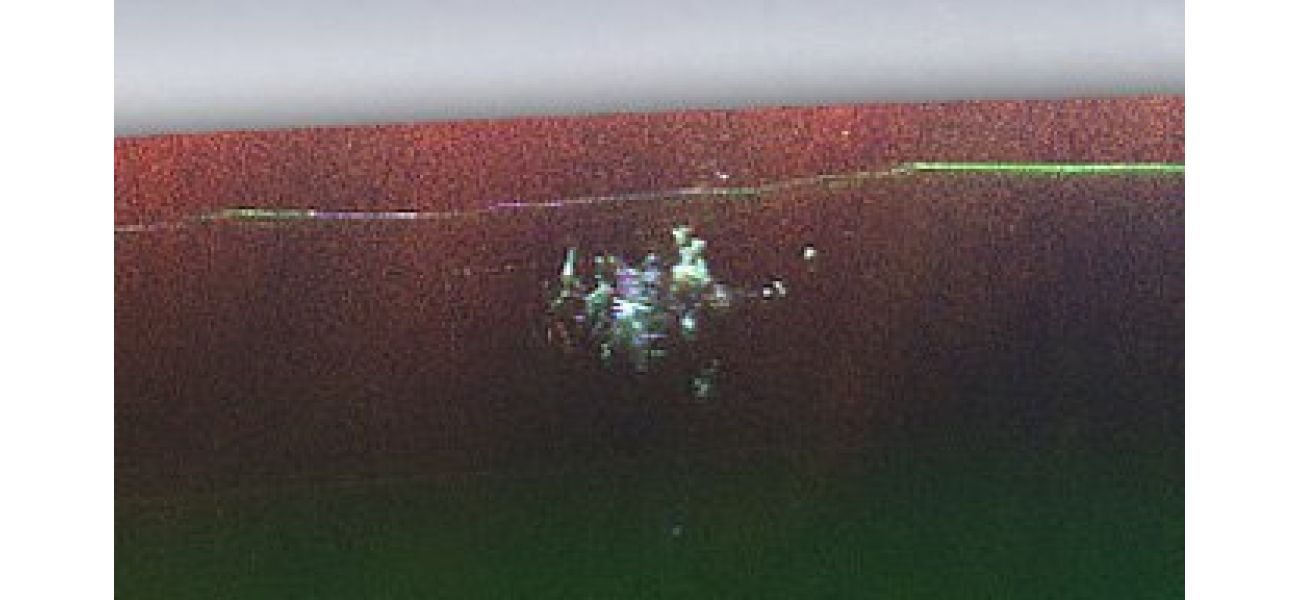Hidden city under Greenland's ice sheets revealed through satellite images.
During the Cold War, Project Iceworm was a plan by the US to store hundreds of ballistic missiles in tunnels known as 'Camp Century'.
November 27th 2024.

Recently, a radar instrument was able to capture images of the infamous 'Camp Century' that lies deep beneath the thick ice of Greenland. This complex network of tunnels was once thought to be the safest place on Earth during times of war. It was initially created during the Cold War as part of Project Iceworm, a plan by the US to store hundreds of ballistic missiles in the system of tunnels. Back then, military leaders were preparing for a potential nuclear attack on the Soviet Union amidst heightened tensions.
However, just a decade after its construction, the base was abandoned in 1967 due to the realization that the glacier was moving. Now, years later, these frozen tunnels have been brought back into the spotlight through stunning new images. According to Alex Gardner, a cryospheric scientist at Nasa's jet propulsion laboratory, they were initially searching for the bed of the ice when they stumbled upon Camp Century. The new data has allowed for individual structures within the secret city to be visible like never before.
The underground network consists of three kilometers of tunnels and served as a home to laboratories, shops, a cinema, a hospital, and accommodations for hundreds of soldiers. A map of the tunnel system reveals all the available amenities, while supplies were transported through 'Sno-Trains' equipped with massive wheels suitable for the icy terrain. However, despite its seemingly impenetrable location, the site is not without its dangers. It continues to store nuclear waste, which was initially assumed to remain frozen indefinitely. The US army even removed the nuclear reactor installed on site, but the waste – equivalent to the mass of 30 Airbus A320 airplanes – was left entombed beneath the snow.
Interestingly, other sites around the world, without nuclear waste, could also serve as safe havens in the event of a third world war. Wood Norton, for example, is a network of tunnels located deep within the Worcestershire forest. It was originally purchased by the BBC during World War 2 as a precaution in case of a crisis in London. Similarly, Peters Mountain in Virginia, USA, serves as one of several secret centers known as AT&T project offices, which are crucial for the US government's continuity planning.
Moving further north, Raven Rock Mountain Complex in Pennsylvania is a base capable of accommodating up to 1,400 people. And in Colorado, the Cheyenne Mountain Complex boasts five chambers of reservoirs for fuel and water, with rumors of an underground lake in one section. The construction of this mysterious base began in 1959, with trenches being cut using heavy machinery. These sites, along with others around the world, serve as potential safe havens, but the question remains – will they ever need to be used?
However, just a decade after its construction, the base was abandoned in 1967 due to the realization that the glacier was moving. Now, years later, these frozen tunnels have been brought back into the spotlight through stunning new images. According to Alex Gardner, a cryospheric scientist at Nasa's jet propulsion laboratory, they were initially searching for the bed of the ice when they stumbled upon Camp Century. The new data has allowed for individual structures within the secret city to be visible like never before.
The underground network consists of three kilometers of tunnels and served as a home to laboratories, shops, a cinema, a hospital, and accommodations for hundreds of soldiers. A map of the tunnel system reveals all the available amenities, while supplies were transported through 'Sno-Trains' equipped with massive wheels suitable for the icy terrain. However, despite its seemingly impenetrable location, the site is not without its dangers. It continues to store nuclear waste, which was initially assumed to remain frozen indefinitely. The US army even removed the nuclear reactor installed on site, but the waste – equivalent to the mass of 30 Airbus A320 airplanes – was left entombed beneath the snow.
Interestingly, other sites around the world, without nuclear waste, could also serve as safe havens in the event of a third world war. Wood Norton, for example, is a network of tunnels located deep within the Worcestershire forest. It was originally purchased by the BBC during World War 2 as a precaution in case of a crisis in London. Similarly, Peters Mountain in Virginia, USA, serves as one of several secret centers known as AT&T project offices, which are crucial for the US government's continuity planning.
Moving further north, Raven Rock Mountain Complex in Pennsylvania is a base capable of accommodating up to 1,400 people. And in Colorado, the Cheyenne Mountain Complex boasts five chambers of reservoirs for fuel and water, with rumors of an underground lake in one section. The construction of this mysterious base began in 1959, with trenches being cut using heavy machinery. These sites, along with others around the world, serve as potential safe havens, but the question remains – will they ever need to be used?
[This article has been trending online recently and has been generated with AI. Your feed is customized.]
[Generative AI is experimental.]
0
0
Submit Comment





